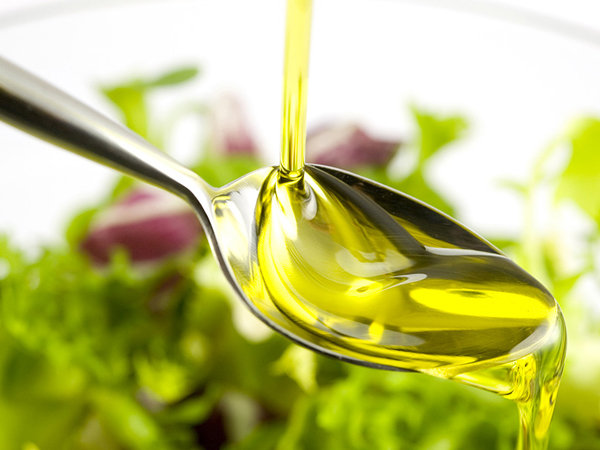While some mothers have trouble eating and sleeping because they don't have enough milk to breastfeed their babies, others worry about too much breast milk. Is there any solution for mom in this case?
Mothers who have too much milk will often feel tight, stinging and prone to mastitis. Sometimes mom will suffer severe pain because the milk waves come back too strong. Babies with a lot of breast milk are not "happy". Babies often have symptoms such as irritability, hiding breastfeeding, crying, choking, spitting milk out and hiccups. The way mothers forcefully squeeze their hands to push the milk down to breastfeed has accidentally choked the baby, choking the milk as if the baby had to fight the "milk sickness" when the sparks of milk shot too fast and hard into the baby's mouth.

Sometimes, when the milk comes back too much, it also brings a lot of "trouble" for the mother
1 / Harmful when the breast milk is too much
During each breastfeed, the mother will produce about 15ml of colostrum and 60 ml of final milk. Colostrum is produced at the beginning of a feeding, has a clear, sweet taste, and is high in lactose but low in fat. In contrast, the final milk produced when the milk comes back, travels through the milk glands and collects fat along the way, is higher in calories and more cloudy. Thus, normally the amount of breastmilk a baby can suckle each time is about 150 ml in both breasts.
For mothers with a lot of milk, they will be able to produce 30ml of colostrum and 90ml of final milk. This way, your baby will be able to suckle about 120ml on each side and when the baby moves to the other side, he is quite full and can only drink 30ml of colostrum. This will cause the baby's first milk to be fed twice as usual, and the double amount of lactose in the intestine will be high, causing the baby to choke, vomiting the milk to release less lactose from the belly. In addition, because the baby does not absorb enough fat in the final milk, the baby will quickly become hungry and quickly ask for more.
2 / Solution for mothers when the milk is too much
- Let the baby suck on one side until the baby wants to release the breast. If the baby is feeding less than 15-20 minutes on one side, and less than 1-2 hours later, the baby wants to continue feeding, then feed the baby on the breast that has just finished feeding for at least 15-20 minutes.
- Do not feed the baby on the other side if the baby breastfeeds for 15 minutes or more without the need to continue feeding on the other side. Because at this time, the baby may have loaded all the milk he needs with just one breast. Many babies, especially newborn babies, will continue to breastfeed on the other breast if their mothers "invite" enthusiastically. The baby continues to suckle not because of hunger, but simply because the baby likes to latch on to the breast. If the other breast is very tight at this time before feeding the baby again, the mother can "discharge" a little milk out to reduce the discomfort at this time, not to empty the breast milk.

Breastfeeding also needs "tactics" Experts still recommend breastfeeding for at least 6 months of life. This is the simplest and most effective way to create a safe foundation for your baby. However, for first-time mothers, breastfeeding can be more or less difficult. Don't be too serious, MarryBaby will tell you something ...
- Put the baby on his side, hold the baby so that the baby's face is facing the breast and let the baby lie on the mother's feet with the baby's head raised above the nipple. You can also let your baby lie on the chest and then feed the baby. Thanks to Earth's gravity, babies can control the speed and amount of milk they feed more easily.
If the baby is too small, the mother can hold the baby like a ball. The face is facing the chest and the legs are at the mother's side, but make sure the baby's head is higher than the body. Mothers should use extra towels or diapers to catch the flow of milk because the baby will have too much milk to flow out of the baby's mouth.
- Squeeze when the milk comes in a lot : The first phase will come back at a fast and strong speed and then slowly, so the mother can express this milk in a towel, then feed the baby when the milk flow is steady. and "meek". You can also express milk in a small glass that is stored before feeding your baby. This stored milk can be put in a bottle for the baby to feed or stir the baby powder to eat next. If your baby choked or choked during a feed, stop breastfeeding, express some milk, then lay down to help calm your baby.
- Help your baby burp: Babies who hiccup or suffocate when their mother's milk comes back a lot will often swallow air into the abdomen. Therefore, mothers should find ways to help the baby burp, especially when the baby continues to hiccup during breastfeeding. Do not be surprised or panicked when your baby is vomiting a lot, especially when the milk is not stable. It is worth mentioning that the majority of babies who vomit when the milk comes rushing back often gain good weight. Vomiting is a way for these babies to clean up their intestines and then to feed more. However, a baby vomiting too much after each feeding can be a sign that the baby is not well, and mothers should take the baby to the doctor right away.
- Avoid sucking or expressing milk when it's not really needed: Only when you feel your breasts are tight, you should pump or express milk to release less. Because when you make your breasts "empty" you may feel better, but you also "accidentally" signal your body to produce new milk.
How long does breast milk last? The "strength" of breast milk may surprise you. But do you know how long your breastmilk lasts? Check to see if you have mastered the principles when preserving and storing this precious source of nutrients for your baby!
Drink a packet of ginseng tea before bed: Ginseng is an herb that contains natural feces of the hormone estrogen, capable of reducing milk secretion. You should stop using it once your milk starts coming in less and less.
- Let your baby suck on a pacifier : The more a baby latches on to the breast, the more milk will release. Therefore, if your baby loves to latch, you can try giving your baby a pacifier. If your baby accepts to suck on a pacifier, after about a week, the mother will see a significant reduction in the amount of secreted milk because it has adjusted itself according to the baby's needs.
- Coping with a breast addicted baby: Breastfeed your baby on one side for 2 hours instead of switching back and forth from the breast after a few minutes, 5 minutes from one breast and 5 minutes from the other. Because doing so will cause your baby to drink more lactose-rich colostrum, it is easy to upset the baby's intestines.
Usually, the problem of too much milk will gradually be overcome as the baby grows and has better control over the flow of milk. As the baby grows, the baby's food source will be richer, so the need for breast milk will also decrease and remember that the mother's body also adjusts the yield accordingly so that it is not too excess. As with problems related to breastfeeding, this is fine.













